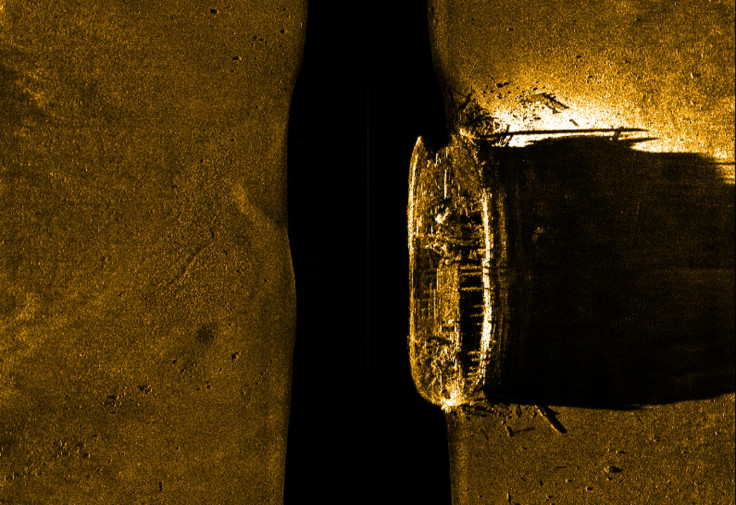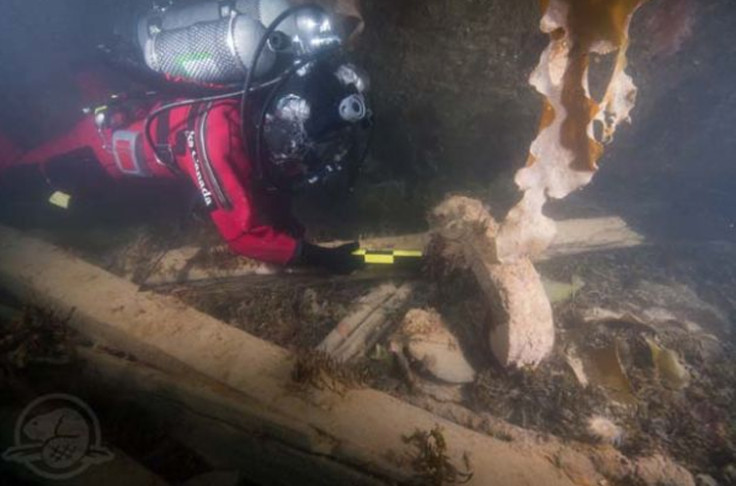HMS Erebus: Canadian Shipwreck Identified as Sir John Franklin's Long-Lost Flagship

A shipwreck discovered last month in the Canadian Arctic has been formally identified as HMS Erebus, the long-lost flagship that British explorer Sir John Franklin commanded during his ill-fated expedition in 1845 to discover the fabled Northwest Passage from the Atlantic Ocean to Asia.
There were two ships that were part of the Franklin expedition, the HMS Erebus and the HMS Terror. The ships disappeared after becoming stuck in ice in 1846, apparently on the brink of success in navigating the North-West Passage.
Canadian Prime Minister Stephen Harper announced the discovery in the House of Commons this week, following confirmation from government underwater archaeologists.

"I am pleased to announce today that the Franklin Expedition ship located by the Victoria Strait Expedition in September has been identified as HMS Erebus. The locating and identifying of this ship goes a long way to solving one of Canada's greatest historical mysteries," he said.
"I had the privilege of witnessing the remarkable dedication and skills of the search team first-hand during this year's Northern Tour and it has left a lasting impression. I wish them well in their search for HMS Terror."
The shipwreck was discovered under 11m of water near King William Island and environmental government agency, Parks Canada, has led six major searches for the lost Franklin expedition ships since 2008, spending millions of Canadian dollars on the search mission.
Using state-of-the-art technology, the archaeologists painstakingly scanned many hundreds of square kilometres of the Arctic seabed to provide high-resolution photography, high-definition video and multi-beam sonar measurements. A timelapse video was created to reveal the conditions the researcher faced in their attempts to find the lost ships.
"It is fantastic that the ship survives in such good condition that it is possible to take a series of measurements to establish that it is HMS Erebus, rather than HMS Terror," Gillian Hutchinson Curator at the National Maritime Museum, Greenwich told IBTimes UK.
"The two ships were very similar but Erebus was slightly larger. It also makes the discovery more of a people story. We know who was onboard and the museum has some of their personal possessions, found along the route of their desperate attempt to walk to safety."
Sir John Franklin's ill-fated expedition

Captain Sir John Franklin was born in Lincolnshire in 1786 and served in the Royal Navy in many historic naval battles and voyages, including the Napoleonic Wars, the Battle of Trafalgar, the Battle of New Orleans and an expedition to explore the coast of Australia, as well as three successful Arctic expeditions.
In 1845, Franklin, aged 59, agreed to command a fourth Arctic expedition to chart a remaining 500km of unexplored Arctic coastline, setting sale from Greenhithe on 19 May 1845 with a crew of 24 officers and 110 men.
Five crew members were discharged and sent home and the expedition was last seen by European ships on 26 July 1845.
After two years of no word, Franklin's second wife Lady Jane Franklin lobbied the Admiralty to send a search party, but because the expedition had carried enough supplies for three years, the Admiralty waited another year before launching a search.
A £20,000 reward was offered by the British government to anyone who brought assistance to the crew of the Franklin expedition, as well as £10,000 for any information that helped to save the crew, and £10,000 to anyone who could ascertain the fate of the expedition.
Pneumonia, lead poisoning and cannibalism
Scottish explorer John Rae was told in 1854 by Inuit hunters that after the ships had become icebound, the crew had tried to reach safety on foot, but had all died of starvation, with some even resorting to cannibalism, which shocked Victorian society back in England.
Finally in 1859, an expedition led by Francis McClintock found relics and human remains on King William Island, including a handwritten note stating that Sir John Franklin died on 11 June 1847, and that the ships were deserted on 22 April 1848.
In the 1980s, Canadian archaeologists found coffins containing three crewmen buried in the permanently frozen ground on Beechey Island.
The mummies were perfectly preserved and analysis of the remains identified the presence of scurvy, tuberculosis and severe lead poisoning, thought to have been caused by a cheap provisioner who applied solder sloppily to seal the cans of preserved food for the crew, so lead was able to leak into the food.
Then between 1992 and 1994, skeletons belonging to more than 11 crew members from the Franklin expedition were discovered on the west coast of King William Island which shows extensive evidence of cannibalism.
In total, over 30 expeditions set sail to search for Franklin's expedition over 40 years, and ironically , far more people died searching for the expedition than the 129 crew who died on the expedition.
Where is Sir John Franklin's body?

However, there has still been no sign of Sir Franklin's body, which is believed to still be on the HMS Erebus.
So far the archaeologists have conducted seven dives consisting of two-man investigation teams over 12 hours and have not entered the shipwreck.
They have so far been able to look at the deck of the ship and looked through old skylights and other openings to see some of the interior, such as the crew's mess.
"Without a doubt it is the most extraordinary shipwreck I've ever had the privilege of diving on," Ryan Harris, a senior underwater archaeologist with Parks Canada and the lead on the project told CBC News.
"We do know that he passed away in June of 1847, but the terse note left by the crew after they deserted the ships in Victoria Strait didn't say what happened and why he died, but I suppose anything is possible.
"There are all kinds of suggestions that he may have been buried on shore, perhaps buried at sea, or perhaps he is still on the ship somewhere. Hopefully archaeological investigations will be able to identify the answer to that question in the years to come."
The National Maritime Museum is now preparing a new exhibition about the Franklin expedition, in line with the excavations being made in Canada on the shipwreck.
"The archaeologists at Parks Canada will not begin to retrieve anything from the site until meticulous underwater recording has been carried out and a comprehensive plan for conservation and long-term preservation of the assemblage and wreck site is in place," said Hutchinson.
"We are developing proposals for a new Polar gallery and for a special exhibition about the search for Sir John Franklin. Our galleries require a long lead-in time and this will allow us to incorporate the exciting new discoveries as they are made over the coming exploration seasons."
© Copyright IBTimes 2025. All rights reserved.




















